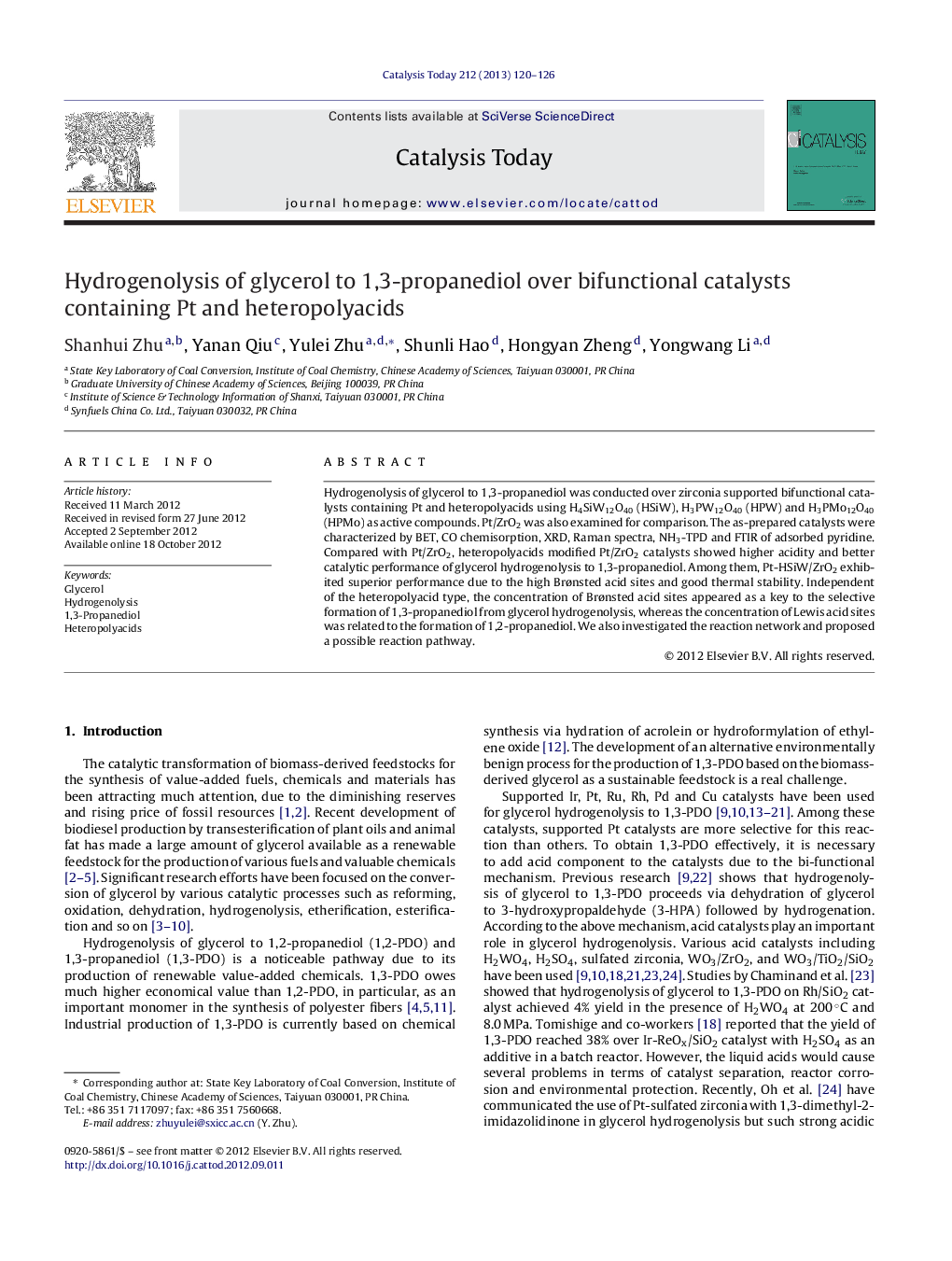| Article ID | Journal | Published Year | Pages | File Type |
|---|---|---|---|---|
| 54815 | Catalysis Today | 2013 | 7 Pages |
Hydrogenolysis of glycerol to 1,3-propanediol was conducted over zirconia supported bifunctional catalysts containing Pt and heteropolyacids using H4SiW12O40 (HSiW), H3PW12O40 (HPW) and H3PMo12O40 (HPMo) as active compounds. Pt/ZrO2 was also examined for comparison. The as-prepared catalysts were characterized by BET, CO chemisorption, XRD, Raman spectra, NH3-TPD and FTIR of adsorbed pyridine. Compared with Pt/ZrO2, heteropolyacids modified Pt/ZrO2 catalysts showed higher acidity and better catalytic performance of glycerol hydrogenolysis to 1,3-propanediol. Among them, Pt-HSiW/ZrO2 exhibited superior performance due to the high Brønsted acid sites and good thermal stability. Independent of the heteropolyacid type, the concentration of Brønsted acid sites appeared as a key to the selective formation of 1,3-propanediol from glycerol hydrogenolysis, whereas the concentration of Lewis acid sites was related to the formation of 1,2-propanediol. We also investigated the reaction network and proposed a possible reaction pathway.
Graphical abstractFigure optionsDownload full-size imageDownload high-quality image (116 K)Download as PowerPoint slideHighlights► Heteropolyacids modified Pt/ZrO2 catalysts was effective in glycerol hydrogenolysis. ► 1,3-Propanediol yield was proportional to the concentration of Brønsted acid sites. ► 1,2-Propanediol yield was proportional to the concentration of Lewis acid sites. ► A possible reaction route was proposed for glycerol hydrogenolysis and degradation.
